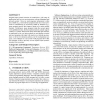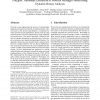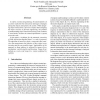28 search results - page 2 / 6 » Tupni: automatic reverse engineering of input formats |
SIGSOFT
2008
ACM
14 years 7 months ago
2008
ACM
Program input syntactic structure is essential for a wide range of applications such as test case generation, software debugging and network security. However, such important info...
CCS
2007
ACM
14 years 1 months ago
2007
ACM
Protocol reverse engineering, the process of extracting the application-level protocol used by an implementation, without access to the protocol specification, is important for m...
MBEC
2010
2010
Reverse engineering the kidney: modelling calcium oxalate monohydrate crystallization in the nephron
13 years 1 months ago
Crystallization of calcium oxalate monohydrate in a section of a single kidney nephron (distal convoluted tubule) is simulated using a model adapted from industrial crystallization...
ICSM
2003
IEEE
14 years 3 days ago
2003
IEEE
In object oriented programming, the functionalities of a system result from the interactions (message exchanges) among the objects allocated by the system. While designing object ...
EMNLP
2009
13 years 4 months ago
2009
We present a framework to extract the most important features (tree fragments) from a Tree Kernel (TK) space according to their importance in the target kernelbased machine, e.g. ...



